Catherine Scott and I recently indulged in an almost unheard-of pleasure…A week long car camping trip to the Okanagan Valley! For those of you who don’t know, this is the area where the vast majority of BC wines originate (and tree fruit crops as well!). The South Okanagan and the Lower Similkameen Valleys, biologically speaking, are very similar to a desert, with many of the flora shared with northern parts of the Great Basin Desert.
The purpose of the trip was to have fun and seek out whatever cool life-forms we could, basically doing undirected fieldwork. With Catherine along, it meant that we sought out a LOT of spiders, but the Okanagan has some spectacular ones, so I was not complaining.
While soliciting info about good spots to check out, one of our Twitter contacts told us to be on the lookout for Efferia okanagana, a robber fly (Asilidae), recently described by Rob Cannings in The Canadian Entomologist.
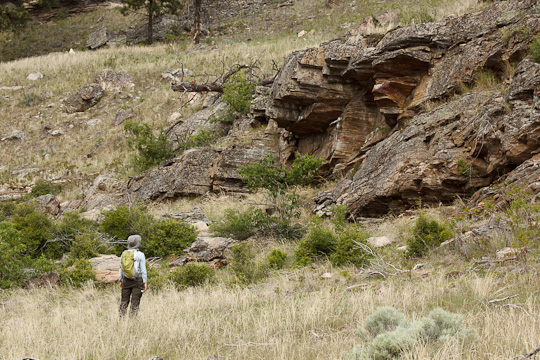
The bluffs are spectacular, with abundant scree slopes, which can produce something terrifyingly called a “debris torrent” at times.
On the 5th day of our trip, we were examining the awesome bluffs above the eastern shore of Vaseux Lake (thanks Nature Trust!), when we spotted our first robber. I managed to get a dorsal shot of this female, followed by a couple lateral shots.
We took these to a local restaurant with Wi-Fi, and compared them to the pictures of E. okanagana in the paper. They looked mighty similar! We went on Twitter to ask Dr. Cannings if these were indeed the Efferia we were looking for. They were!
This robber is at significant risk of extinction due to its small range in Canada (to date it has not been collected in Washington State). The South Okanagan grassland habitats where this and other iconic wildlife make their living are at risk due to widespread development and increased agricultural land use. It is one of the earliest-flying robbers in the area, and photographs have documented it feeding on a wide variety of insect taxa. Like other large Efferia, they are not super difficult to approach, flying in bursts when disturbed and often coming to rest only metres away.
The very next day, coincidentally World Robber Fly Day (thanks to Erica McAlister of the Natural History Museum), we set out for the bluffs once more (they are an awesome habitat). We managed to find E. okanagana several more times, including a female feeding and a pair in copula!


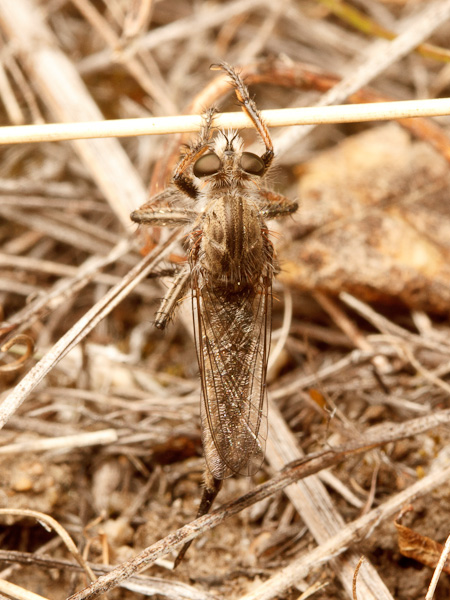
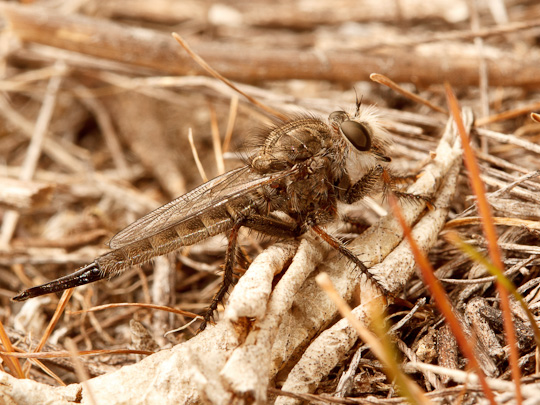
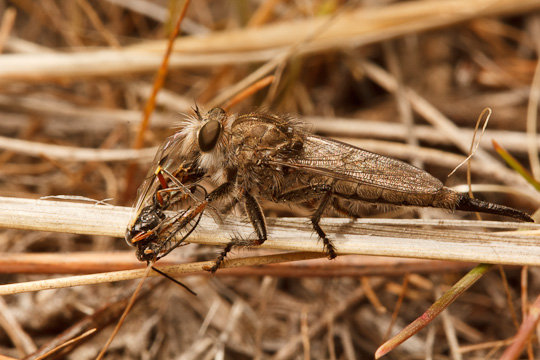
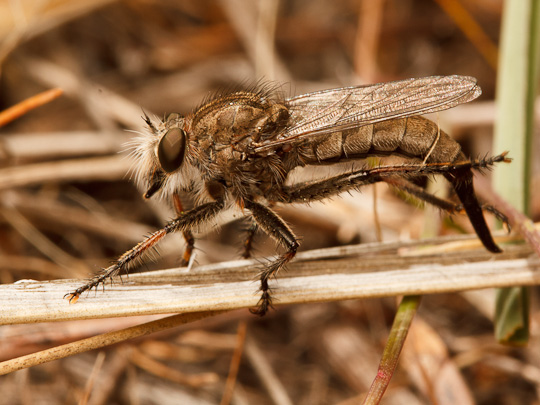


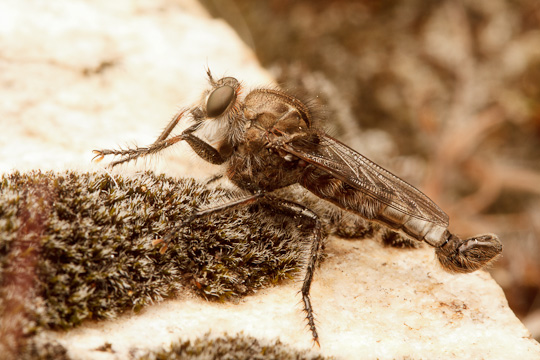
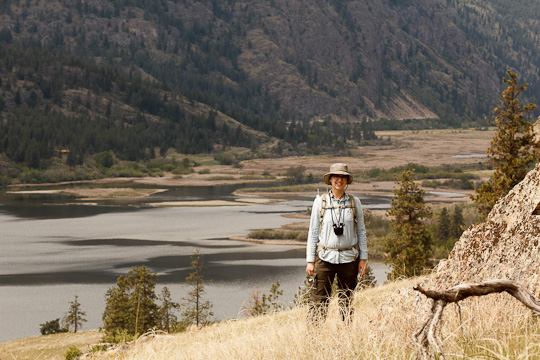
Very nice!
“undirected fieldwork” = keeping your eyes open whilst enjoying the great outdoors! 🙂
PS Thanks to @CMBuddle for tweeting this page…
A gorgeous location, and time to find whatever we could find…My idea of awesome!
Wow! Great photo coverage of the robber fly! Well done. I’ve been planning to visit the BC ‘prairies’ this year as well.
Let us know, and we can send some great localities to visit!